HHftD
Healthy Housing for the Displaced
| Funder | UKRI - GCRF + EPSRC |
| Website | Website |
| PI | Professor David Coley |
| Team | Team |
| Link | UKRI |
| Journal articles | (Fosas et al., 2018; Fosas et al., 2020; Moran et al., 2021; de Castro et al., 2021; Conzatti et al., 2025) |
| Conference papers | (Fosas et al., 2017; Fosas et al., 2018; Paszkiewicz & Fosas, 2019; Conzatti et al., 2021) |
| Other | (Fosas et al., 2017; Fosas & Natarajan, 2019) |
References
2025
-
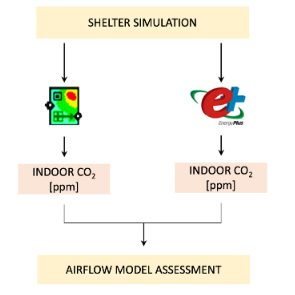 Are simple models for natural ventilation suitable for shelter design?Anna Conzatti, Daniel Fosas, Ben Chater, and 1 more authorBuildings & Cities, 2025
Are simple models for natural ventilation suitable for shelter design?Anna Conzatti, Daniel Fosas, Ben Chater, and 1 more authorBuildings & Cities, 2025Many competing airflow models are available to aid designers size windows for natural ventilation, but their complexity in terms of computation and the required expertise needed has limited their application in shelter design. Shelters house over 8 million people worldwide, and the prevalent inadequacy of indoor air quality exacerbates health risks. This study examines the use of simplified airflow models to guide the shelter design process to deliver adequate natural ventilation schemes and window dimensions. The classic Warren equations for natural ventilation are compared with airflow network models in Contam and EnergyPlus to contrast design outcomes from a practical perspective. Five natural ventilation mechanisms are tested across a representative single-zone shelter, based on those at Hitsats refugee camp (northern Ethiopia), using indoor CO2 concentrations as the key performance indicator. Results for opening sizes and ventilation layouts derived from Warren are in close agreement with those from airflow network models in Contam and EnergyPlus. Wind-driven scenarios feature the same window size for 99% of the time, while buoyancy-driven scenarios are for 94–97% of the time. These results prove that simplified modelling approaches would lead to the same design decisions as more complex models, making them as suitable and as reliable for the design of single-zone shelters.
@article{conzatti2025nv_simple, title = {Are simple models for natural ventilation suitable for shelter design?}, author = {Conzatti, Anna and Fosas, Daniel and Chater, Ben and Coley, David}, year = {2025}, journal = {Buildings \& Cities}, volume = {6}, pages = {158--181}, issn = {26326655}, doi = {10.5334/bc.497}, url = {https://journal-buildingscities.org/articles/10.5334/bc.497}, }
2021
-
 Improving Thermal Comfort in Refugee Shelters in Desert EnvironmentsFrancis Moran, Daniel Fosas, David A. Coley, and 3 more authorsEnergy for Sustainable Development, 2021
Improving Thermal Comfort in Refugee Shelters in Desert EnvironmentsFrancis Moran, Daniel Fosas, David A. Coley, and 3 more authorsEnergy for Sustainable Development, 2021Empirical studies have shown that internal temperatures in refugee shelters are impacting morbidity, and possibly mortality. Within a displacement setting, solutions are often constrained by time, cost, material availability and local requirements. This often results in “deemed suitable” designs rather than optimal solutions. In this study, we ask which route is most appropriate to optimise thermal comfort: prototyping design improvements, which requires time but may not require significant domain expertise, or thermal modelling, which can be quickly carried out if there is expertise. In a unique experiment, a laboratory of 12 shelters, built in a desert refugee camp, was adapted by the refugees themselves with variants to improve thermal comfort. Thermal modelling and field results were compared. Prototyping, though requiring additional time, was found to offer several advantages over modelling: (a) it gives a more visceral answer, in that the agency staff and refugees can experience the improvement - this could be important as most people might not be able to relate to a numeric statement about temperature; (b) the difficulty of constructing variants can be compared; (c) the financial and time costs are identified accurately. This suggests that such prototyping experiments have great utility, conferring substantial advantages over computer-based modelling. Significantly, we show that simple adaptations can improve conditions by up to 6 °C, and that the skills exist in camps to complete such improvements.
@article{moran2021improving, title = {Improving Thermal Comfort in Refugee Shelters in Desert Environments}, journal = {Energy for Sustainable Development}, volume = {61}, pages = {28--45}, author = {Moran, Francis and Fosas, Daniel and Coley, David A. and Natarajan, Sukumar and Orr, John and Bahni, Omar}, year = {2021}, } -
 ShelTherm: an aid-centric thermal model for shelter designManuela de Castro, Noorullah Kuchai, Sukumar Natarajan, and 5 more authorsJournal of Building Engineering, 2021
ShelTherm: an aid-centric thermal model for shelter designManuela de Castro, Noorullah Kuchai, Sukumar Natarajan, and 5 more authorsJournal of Building Engineering, 2021The growing displacement crisis leaves many housed in simple shelters, which are bespoke to each setting, often sited in harsh climates and normally unconditioned. Measurements have shown that the thermal environment within the shelters can be life-threatening. Hence aid agencies are interested in improving these conditions. Unfortunately, given the skill set within agencies, there is little possibility to use complex thermal modelling to predict the impact of different materials or constructions. Hence the need to provide simple methods. In this work, we introduce a new physics-based thermal model (ShelTherm) for simple structures and encapsulate it within a tool designed to be used by humanitarian staff. Unlike other reduced models, the method is capable of dealing with high ventilation/infiltration rates, thin materials (such as tarpaulin) and high U-values. The model was validated over a wide variety of architectures, materials and climates. Mean error against observed data from a variety of real shelters was +0.94 °C (s.d. 0.79 °C), comparing favourably against the well-known reduced model CIBSE Admittance method (+4.95 °C, s.d. 0.89 °C) and the industry standard Energy+ (+0.60 °C, s.d. 0.32 °C). ISO 13792:2012(E) classified it as a Class 1 model, the highest possible. The differences between the new method and Energy+ across block, tarpaulin and stone shelters in Ethiopia, Bangladesh and Nepal were always less than 1.3 °C, and +0.24 °C for shelters in a mild climate. Humanitarian workers classed the tool as “easy” or “very easy” to use. The typical time to model a shelter by a first-time user was 34 minutes. ShelTherm can hence be seen as highly fit-for-purpose due to its overall accuracy and ease of use.
@article{manuela2021shelterm, title = {ShelTherm: an aid-centric thermal model for shelter design}, journal = {Journal of Building Engineering}, volume = {44}, author = {{de Castro}, Manuela and Kuchai, Noorullah and Natarajan, Sukumar and Adeyeye, Kemi and Fosas, Daniel and Moran, Francis and Wang, Zu and Coley, David A.}, year = {2021}, } -
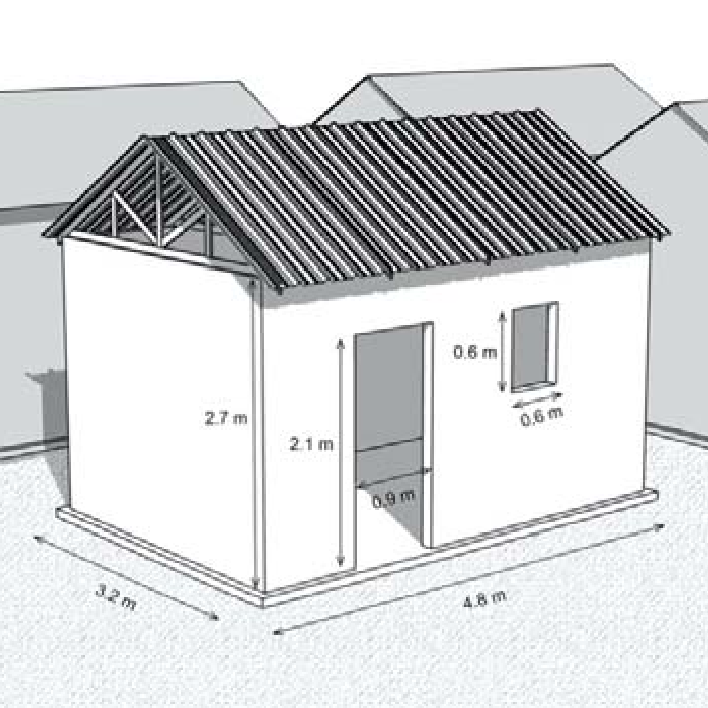 Indoor air quality in refugee shelters: an exploratory study on the potential of improved shelter designAnna Conzatti, Noorullah Kuchai, and Daniel FosasIn Proceedings of Comfort At The Extremes, CATE’21, Muscat, 2021
Indoor air quality in refugee shelters: an exploratory study on the potential of improved shelter designAnna Conzatti, Noorullah Kuchai, and Daniel FosasIn Proceedings of Comfort At The Extremes, CATE’21, Muscat, 2021There are more than eighty million forcibly displaced people worldwide and more than twenty-six million are refugees. Often, these refugees are encamped in temporary shelters consisting of one or two rooms, where all the daily activities, such as cooking and sleeping, occur. This paper focuses on the indoor air quality (IAQ) of shelters in Hitsats refugee camp (Ethiopia), where refugees use traditional charcoal stoves for cooking and heating and shelters are extremely overcrowded. Therefore, the indoor use of solid fuel and the high number of occupants resulted in poor indoor air quality. Despite limited access to the camp, the indoor concentration of carbon dioxide (CO2) was measured using spot measurements in winter and summer in 286 permanent shelters and used to estimate CO2 concentration and ventilation rate. In this study, the indoor concentration of carbon dioxide has been used to investigate airflow efficiency in refugee shelters and to predict the quality of indoor air. The results indicate very poor air quality, especially during the night. Low levels of airflow resulted in potentially health-threatening indoor levels of CO2. The study suggests further investigation of resilient solutions for enhancing airflow while maintaining improved IAQ, indoor thermal comfort, and not compromising the security of the dwellers.
@inproceedings{conzatti2021iaq, title = {Indoor air quality in refugee shelters: an exploratory study on the potential of improved shelter design}, author = {Conzatti, Anna and Kuchai, Noorullah and Fosas, Daniel}, eventtitle = {Comfort At The Extremes 2021}, booktitle = {Proceedings of Comfort At The Extremes, CATE'21}, location = {Muscat}, year = {2021}, pages = {161--169}, }
2020
-
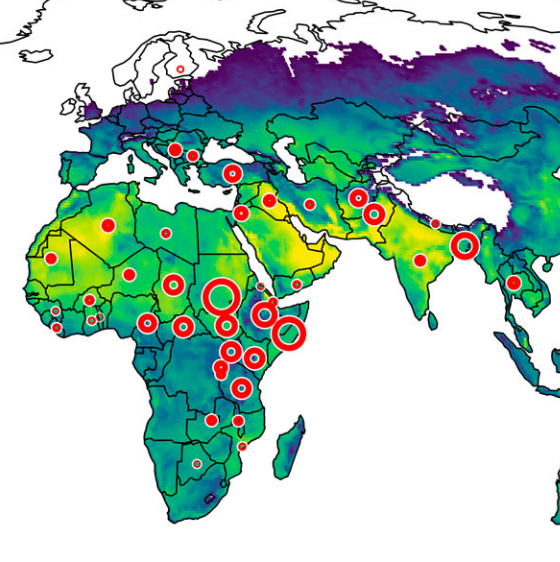 The importance of thermal modelling in transitional shelters designDaniel Fosas, Francis Moran, Sukumar Natarajan, and 2 more authorsBuilding Research & Information, 2020
The importance of thermal modelling in transitional shelters designDaniel Fosas, Francis Moran, Sukumar Natarajan, and 2 more authorsBuilding Research & Information, 2020More than 9 million people live in shelters globally, often in extremely hot climates. The thermal performance of shelters is often overlooked in the design process, despite being a consideration second only to safety in surveys of camp dwellers. Indeed, indoor temperatures exceeding 40 °C have been recorded. To aid in improving conditions, we examine the roles building simulation and prototyping could play in forecasting shelter thermal performance as part of a new shelter design process. The thermal performance of seven prototypes, built in the refugee camp of Azraq, was monitored during the hot season to test the suitability of four design approaches: (1) “blind” (uncalibrated) models, (2) calibrated models, (3) on-site prototypes and (4) off-site prototypes. These included the original shelter and six design alternatives implementing different overheating countermeasures. The results demonstrate that blind models are sensitive to the judgement of uncertainties but were still qualitatively useful. Model calibration vastly improves the agreement and significantly enhances forecasts of performance for the design alternatives, which remained similar across examined climates. We therefore conclude that simulation and prototyping, either on-site or off-site, should be adopted within the shelter design process before mass deployment, to create better living conditions for their dwellers.
@article{fosas2020importance, title = {The importance of thermal modelling in transitional shelters design}, journal = {Building Research \& Information}, volume = {48}, pages = {379--400}, author = {Fosas, Daniel and Moran, Francis and Natarajan, Sukumar and Orr, John and Coley, David A.}, year = {2020}, }
2019
-
 Reclaiming Refugee Agency and Its Implications for Shelter Design in Refugee CampsNatalia Paszkiewicz and Daniel FosasIn Proceedings of the 1st International Conference on: Comfort at the Extremes: Energy, Economy and Climate, Dubai, 2019
Reclaiming Refugee Agency and Its Implications for Shelter Design in Refugee CampsNatalia Paszkiewicz and Daniel FosasIn Proceedings of the 1st International Conference on: Comfort at the Extremes: Energy, Economy and Climate, Dubai, 2019Refugee agency refers to the notion of decision making exercised by forced migrants, and their efforts aimed at improving life in the context of displacement. As such, it has emerged as a useful concept to channel discussions about the challenges of current refugee encampment practices, which we argue encompasses consequences for the design and provision of shelter solutions. Building on the evidence collected in selected refugee camps of Jordan and Ethiopia, we suggest that acknowledging and incorporating the voices of refugees can not only enhance their well-being in climatically, socially and politically challenging environments, but it could also be beneficial to other actors such as humanitarian agencies and host governments. While we recognize the constrains arising in these contexts, we focus on the importance of adaptations and customization of shelters that we found to be the leitmotiv and, more critically, a fundamental humanizing factor of refugee experience in camps. The refugees’ freedom to make choices about their own shelters can then be used to rethink how to deliver better environments in which camp inhabitants can live in dignity. Although engineering design can only facilitate agency, rather than give it, it could help build the consensus about the pre-requisites of what constitutes truly ‘appropriate’ shelters.
@inproceedings{paszkiewicz2019reclaiming, title = {Reclaiming Refugee Agency and Its Implications for Shelter Design in Refugee Camps}, booktitle = {Proceedings of the 1st {{International Conference}} on: {{Comfort}} at the {{Extremes}}: {{Energy}}, {{Economy}} and {{Climate}}}, author = {Paszkiewicz, Natalia and Fosas, Daniel}, year = {2019}, pages = {584--594}, publisher = {Ecohouse Initiative Ltd}, location = {Dubai}, eventtitle = {International Conference on: Comfort at the Extremes: Energy, Economy and Climate}, } -
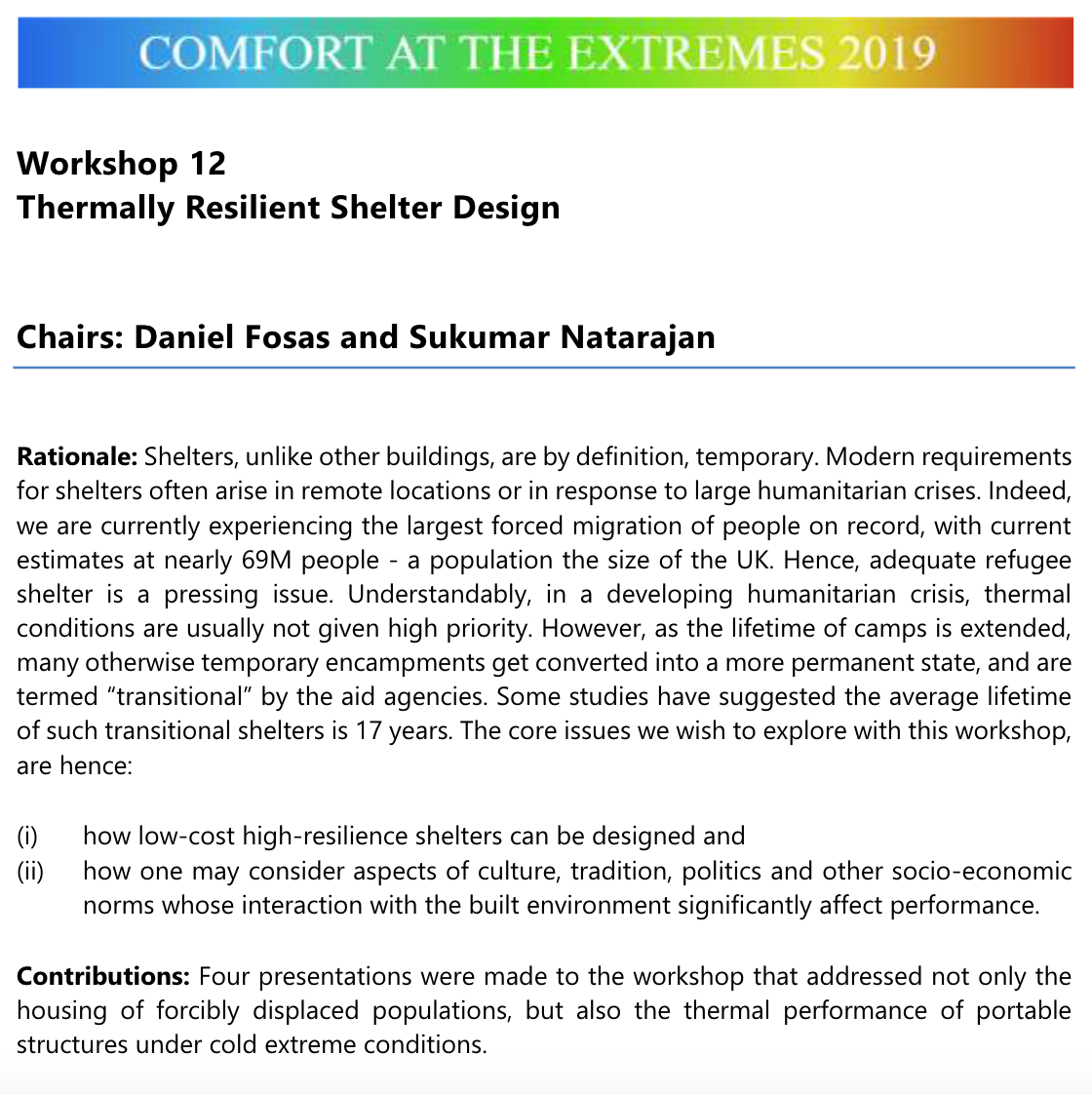 Thermally Resilient Shelter DesignDaniel Fosas and Sukumar Natarajan2019
Thermally Resilient Shelter DesignDaniel Fosas and Sukumar Natarajan2019Shelters, unlike other buildings, are by definition, temporary. Modern requirements for shelters often arise in remote locations or in response to large humanitarian crises. Indeed, we are currently experiencing the largest forced migration of people on record, with current estimates at nearly 69M people - a population the size of the UK. Hence, adequate refugee shelter is a pressing issue. Understandably, in a developing humanitarian crisis, thermal conditions are usually not given high priority. However, as the lifetime of camps is extended, many otherwise temporary encampments get converted into a more permanent state, and are termed “transitional” by the aid agencies. Some studies have suggested the average lifetime of such transitional shelters is 17 years. The core issues we wish to explore with this workshop, are hence: (i) how low-cost high-resilience shelters can be designed and (ii) how one may consider aspects of culture, tradition, politics and other socio-economic norms whose interaction with the built environment significantly affect performance.
@report{fosas2019resilientshelters, title = {Thermally Resilient Shelter Design}, booktitle = {LEGACY OF THE 1st INTERNATIONAL CONFERENCE ON COMFORT AT THE EXTREMES: ENERGY, ECONOMY AND CLIMATE}, author = {Fosas, Daniel and Natarajan, Sukumar}, editor = {Roaf, Susan and Finlayson, Will}, year = {2019}, pages = {30--32}, }
2018
-
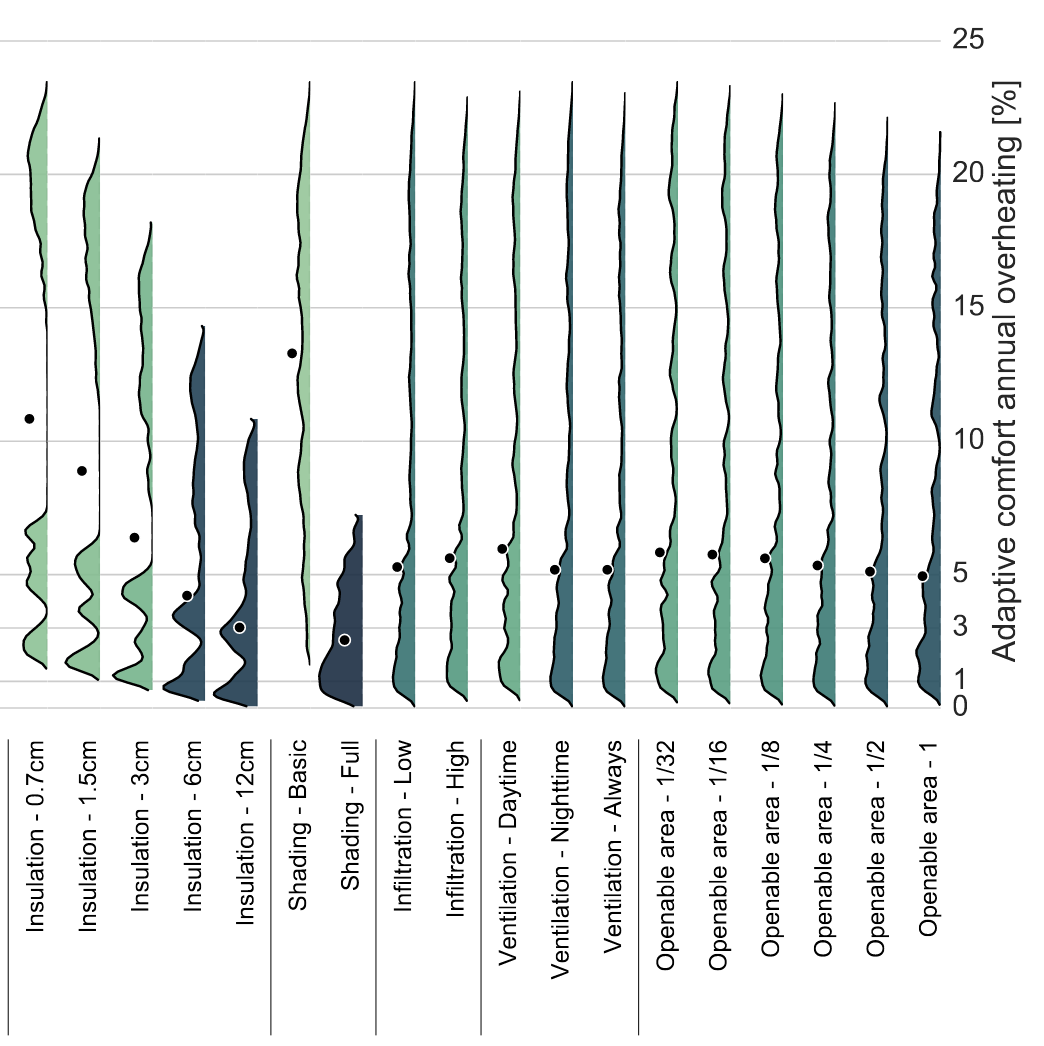 Refugee Housing through Cyclic DesignDaniel Fosas, Dima Albadra, Sukumar Natarajan, and 1 more authorArchitectural Science Review, 2018
Refugee Housing through Cyclic DesignDaniel Fosas, Dima Albadra, Sukumar Natarajan, and 1 more authorArchitectural Science Review, 2018Invited paper from Best Paper Award at PLEA 2017.
There are more than six million refugees living in camps globally, primarily in places with severe climates. While camps are planned to be temporary, they can be in use for decades. This ‘planned temporariness’, despite their potential longevity, together with the pressures of rapidly emerging situations, means the construction and monitoring of demonstrators is not a primary concern for their developers. This lack of iterative design improvement results in shelters with thermal environments far from ideal and a risk of increased morbidity. Here we propose a cyclical process for improving such shelters involving the thermal monitoring of pre-existing shelters to construct validated baseline simulation models of similar shelters in other areas of emerging crisis. These models can then be evolved and improved within an optimization cycle before mass-construction and field testing. Here we demonstrate the method for the case of Azraq camp in Jordan. Starting from an analysis of field survey data which exposes a high incidence of heat-stress experienced in the shelters, a series of architectural strategies are applied to the design, resulting in significant reductions in overheating. This work suggests that the proposed cyclical approach can lead to significant improvement in conditions currently experienced in refugee camp shelters.
@article{fosas2018cyclicdesign, title = {Refugee Housing through Cyclic Design}, volume = {61}, number = {5}, journal = {Architectural Science Review}, year = {2018}, pages = {327-337}, author = {Fosas, Daniel and Albadra, Dima and Natarajan, Sukumar and Coley, David A.}, } -
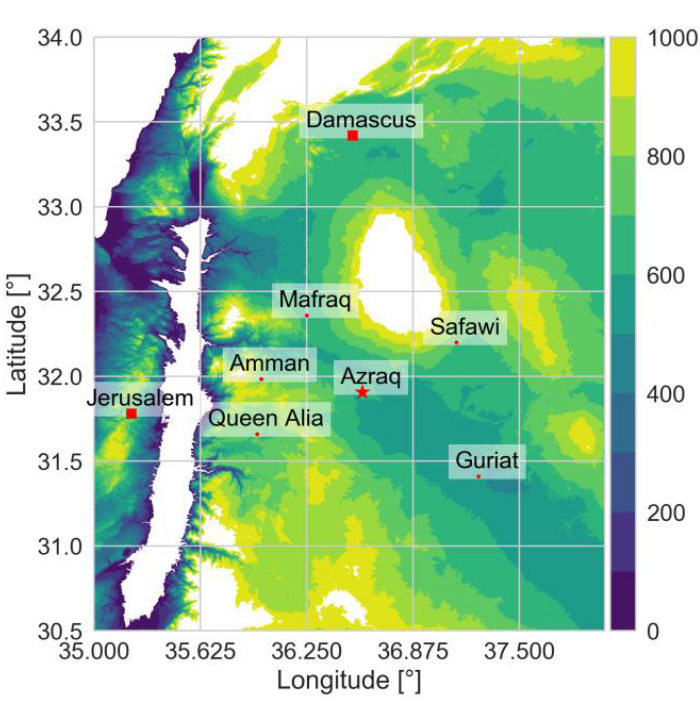 Weather Files for Remote Places: Leveraging Reanalyses and Satellite DatasetsDaniel Fosas, Manuel Herrera, Sukumar Natarajan, and 1 more authorIn 1st International Conference on Data for Low Energy Buildings, Murcia, 2018
Weather Files for Remote Places: Leveraging Reanalyses and Satellite DatasetsDaniel Fosas, Manuel Herrera, Sukumar Natarajan, and 1 more authorIn 1st International Conference on Data for Low Energy Buildings, Murcia, 2018Weather files capture the time-varying conditions under which buildings perform and, as such, they constitute one of the fundamental inputs for building performance simulation. In theory, the creation of weather files only requires collecting data at a certain frequency for a key number of variables during the time of interest. In practice, several problems arise. Direct measurement on a project basis can be a costly operation considering the site accessibility and the number of instruments needed to collect complete weather observations. Sometimes, this is simply impossible if a study requires historical data. These issues are traditionally overcome using the weather data collected at a nearby public weather stations, but this can be equally challenging, or even impossible, depending on how far away the station is and the frequency and completeness of observations. Arising from the need to simulate the thermal performance of buildings at remote locations, this study presents an approach to generate weather files based on satellite imaging and reanalysis datasets. Given the good agreement with local station’s observations, it is shown how these publicly available datasets can be combined to create weather files suitable for building performance simulation. This is applied to a case study to compare the performance of a building and its systems against traditional weather files. The work quantifies and discusses the discrepancy obtained between the different sources. Overall, results indicate that satellite and reanalysis datasets constitute a suitable resource to create weather files for building performance simulation.
@inproceedings{fosas2018weatherfilesremote, location = {Murcia}, title = {Weather Files for Remote Places: Leveraging Reanalyses and Satellite Datasets}, eventtitle = {1st International Conference on Data for Low Energy Buildings}, booktitle = {1st International Conference on Data for Low Energy Buildings}, publisher = {University of Murcia}, year = {2018}, author = {Fosas, Daniel and Herrera, Manuel and Natarajan, Sukumar and Coley, David A}, }
2017
-
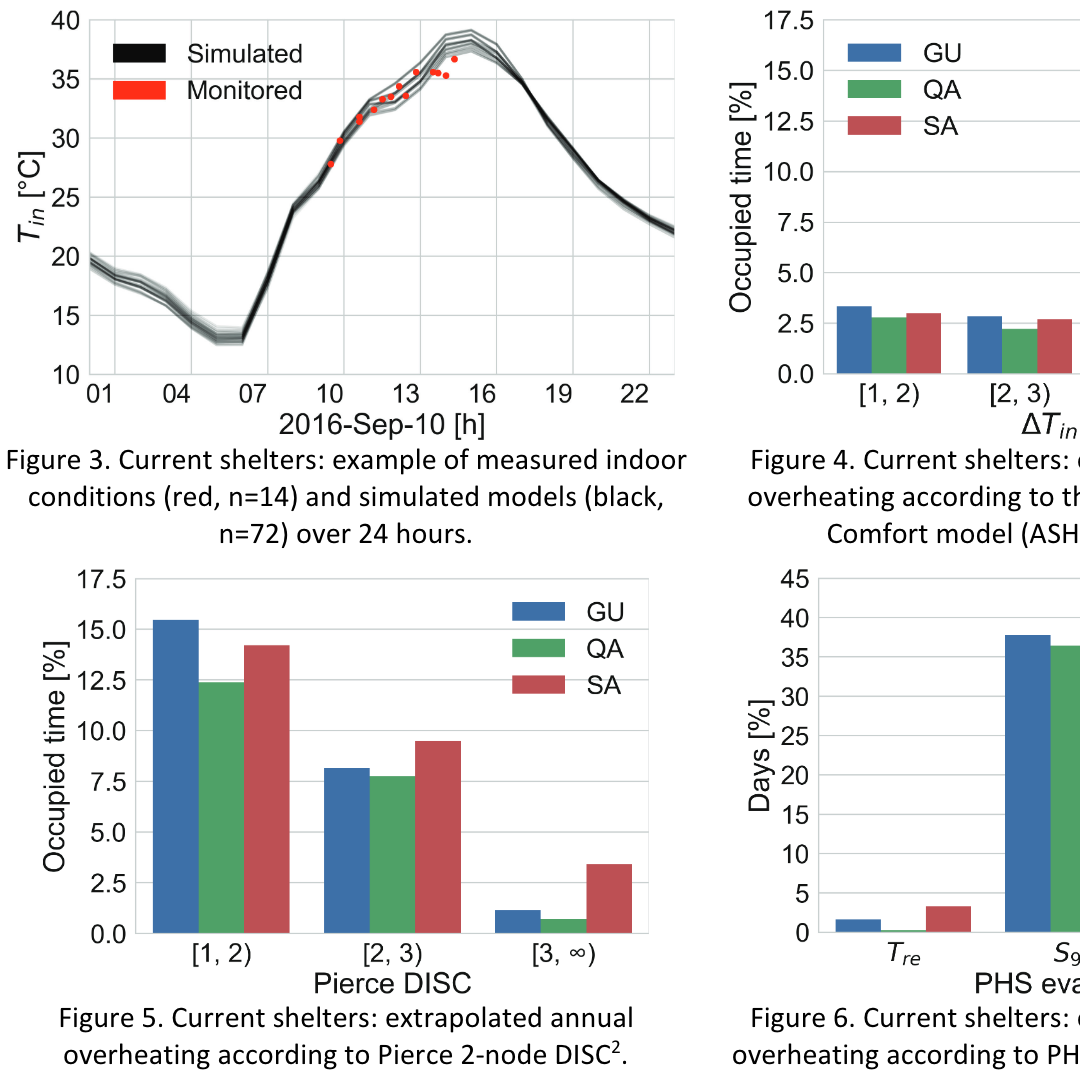 Overheating and health risks in refugee shelters: assessment and relative importance of design parametersDaniel Fosas, Dima Albadra, Sukumar Natarajan, and 1 more authorIn Proceedings of the 33rd PLEA International Conference: Design to Thrive, Edinburgh, 2017
Overheating and health risks in refugee shelters: assessment and relative importance of design parametersDaniel Fosas, Dima Albadra, Sukumar Natarajan, and 1 more authorIn Proceedings of the 33rd PLEA International Conference: Design to Thrive, Edinburgh, 2017Best Paper Award at PLEA2017 (Edinburgh).
There are now more than four million refugees living in camps around the world. The majority of such camps are within inhospitable environments, often with extreme climates. This paper focuses on the thermal conditions of shelters in the Azraq refugee camp (Jordan), subject to an arid climate with high temperatures during the hot season. Due to political and other sensitivities, whole-, or multi-year monitoring of occupied shelters—and hence the empirical determination of overheating—is difficult. Instead, internal conditions in the shelters were monitored for three weeks in summer and used to validate computer models of the accommodation. These models were then used to generate annual predictions of overheating assessed through overheating criteria based on thermal discomfort and physiological indicators of heat stress. Building on these results, the performance of alternative designs specifications or shelter operation strategies were investigated through parametric analysis. The results show max imum indoor temperatures over 45°C. Overheating thresholds were exceeded for more than 20% of the year and physiological indicators suggest the possibility of health-threatening conditions. The use of alternative designs and strategies reduced overheating to nearly 2% of the year, with a steep reduction of severe heat stress indicators.
@inproceedings{fosas2017shelters, location = {Edinburgh}, title = {Overheating and health risks in refugee shelters: assessment and relative importance of design parameters}, author = {Fosas, Daniel and Albadra, Dima and Natarajan, Sukumar and Coley, David A}, editor = {Brotas, Luisa and Roaf, Susan and Nicol, Fergus}, eventtitle = {PLEA 2017}, booktitle = {Proceedings of the 33rd PLEA International Conference: Design to Thrive}, volume = {3}, pages = {3746--3753}, year = {2017}, organization = {NCEUB 2017}, } -
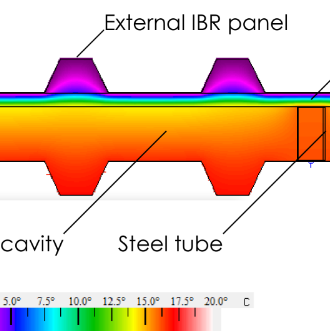 Improving the thermal comfort in new shelters in Azraq refugee campDaniel Fosas, Dima Albadra, Sukumar Natarajan, and 1 more author2017
Improving the thermal comfort in new shelters in Azraq refugee campDaniel Fosas, Dima Albadra, Sukumar Natarajan, and 1 more author2017The Azraq Refugee Camp is an important component in the response from UNHCR and the Jordanian government to the ongoing humanitarian crisis in Syria. While the shelters at Azraq are considered to be among the best in the region, field surveys by the HHftD team have suggested higher than ideal internal temperatures, including one indoor surface temperature measurement of 48°C (when the external temperature was 36°C). Our simulation studies, presented in this report, confirm that the resultant overheating exceeds thresholds for thermal comfort. Therefore, it is worthwhile understanding why this is occurring and re-evaluating the design of these shelters before expanding the use of the design. The purpose of this report is to look at the potential for improving the thermal performance of these shelters without significantly changing their method of construction or external appearance. Complex interventions, such as passive evaporative cooling or buried earth-air heat exchangers, have not been considered. Our simulations shows that the current shelters are likely to be overheating at least 13% of the hours of the year and peak air temperatures are likely to exceed the recommended threshold by more than 15°C. Internal surfaces temperatures are found to reach 46°C – in line with our monitoring, and hence validating our approach.
@report{fosas2017unchr, title = {Improving the thermal comfort in new shelters in Azraq refugee camp}, author = {Fosas, Daniel and Albadra, Dima and Natarajan, Sukumar and Coley, David A.}, institution = {University of Bath}, year = {2017}, }